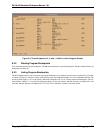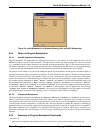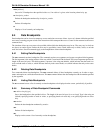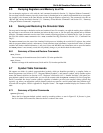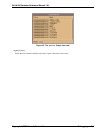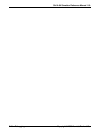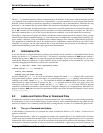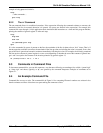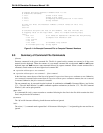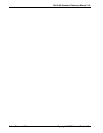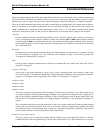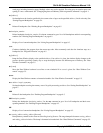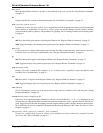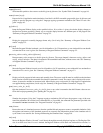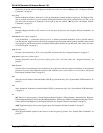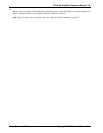
Copyright © 2000 Hewlett-Packard Co. Command Files 9-3
Ski IA-64 Simulator Reference Manual 1.0L
9.5 Summary of Command File Commands
. filename
Executes commands in the given command file. The file is opened and its contents are executed as if they were
entered from the keyboard. When the contents of a non-nested command file are exhausted,
xski
and
ski
resume
keyboard input and
bski
executes a run command followed by a quit command. When a nested command file is
exhausted, control returns to the next-higher-level command file.
if expression-without-spaces true-command
if expression-without-spaces true-command : false-command
In the first form, causes the rest of the line to be ignored if expression-without-spaces evaluates to zero. Otherwise,
true-command is executed. In the second form, if expression-without-spaces evaluates to nonzero, the true-command
is executed. Otherwise, the false-command is executed.
The if command may be executed from the keyboard. In combination with
xski
’s Command History (see Section
3.7.1, “The xski Main Window”) or
ski
’s command repetition mechanism (see Section 3.7.2, “The ski Command
Window”), this can be quite powerful.
goto label
In a command file (only), causes execution to continue following the first line in the file which contains the label.
Goto’s may be forward or backward.
# comment
The “#” and all characters following it until the next newline are ignored.
label:
The colon (“:”) command marks a goto label. All characters following the “:” and preceding the next newline are
ignored.
Figure 9-1. An Example Command File to Compute Fibonacci Numbers
# Compute and print Fibonacci numbers from 1 to 50.
# Initialize variables
= r10 1 # Hold n-2’th value
= r11 1 # Hold n-1’th value
= r12 0 # Temporary holding place for n-1’th value
= r13 0 # Loop counter
# Print out first two Fibonacci numbers (initial values of r10 & r11)
eval r10
eval r11
# Calculate and print the rest of the numbers. The last line has the
# stopping value of the loop index. (This is a simple counting loop.)
loop:
eval +r11 # “+” makes an expression: decimal and hex printing
= r12 r11 # Compute n’th Fibonacci term
= r11 r11+r10
= r10 r12
= r13 r13+1 # Increment loop counter
if r13<0d50 goto loop # Loop again?



